AUDI has unveiled its most advanced and technology packed A8 large luxury sedan to date.
With a plethora of new safety, convenience and comfort advances debuting in the fourth-generation car, class-leading level-three autonomous features will not be offered with the first vehicles, including Australian versions that will arrive in mid 2018.
The new A8 is the first production car developed to offer off-the-shelf self-driving assistance that does not require the driver to touch any controls in traffic up to speeds of 60km/h but, while Audi says the system is ready to go, legislation is preventing its roll out globally.

“We designed the complete A8 for the automated functionality,” he said. “We introduced all of the technologies that are required for this but three challenges need to be met.
“First of all you need a legal framework and that’s only starting to happen in certain countries right now. Secondly, you need a special homologation process for automated driving and that’s also just starting. Then, in every market you bring this technology to, you need to make a very deep validation and testing.
“When all of these three factors are met, we will bring the Piloted Driving function.”
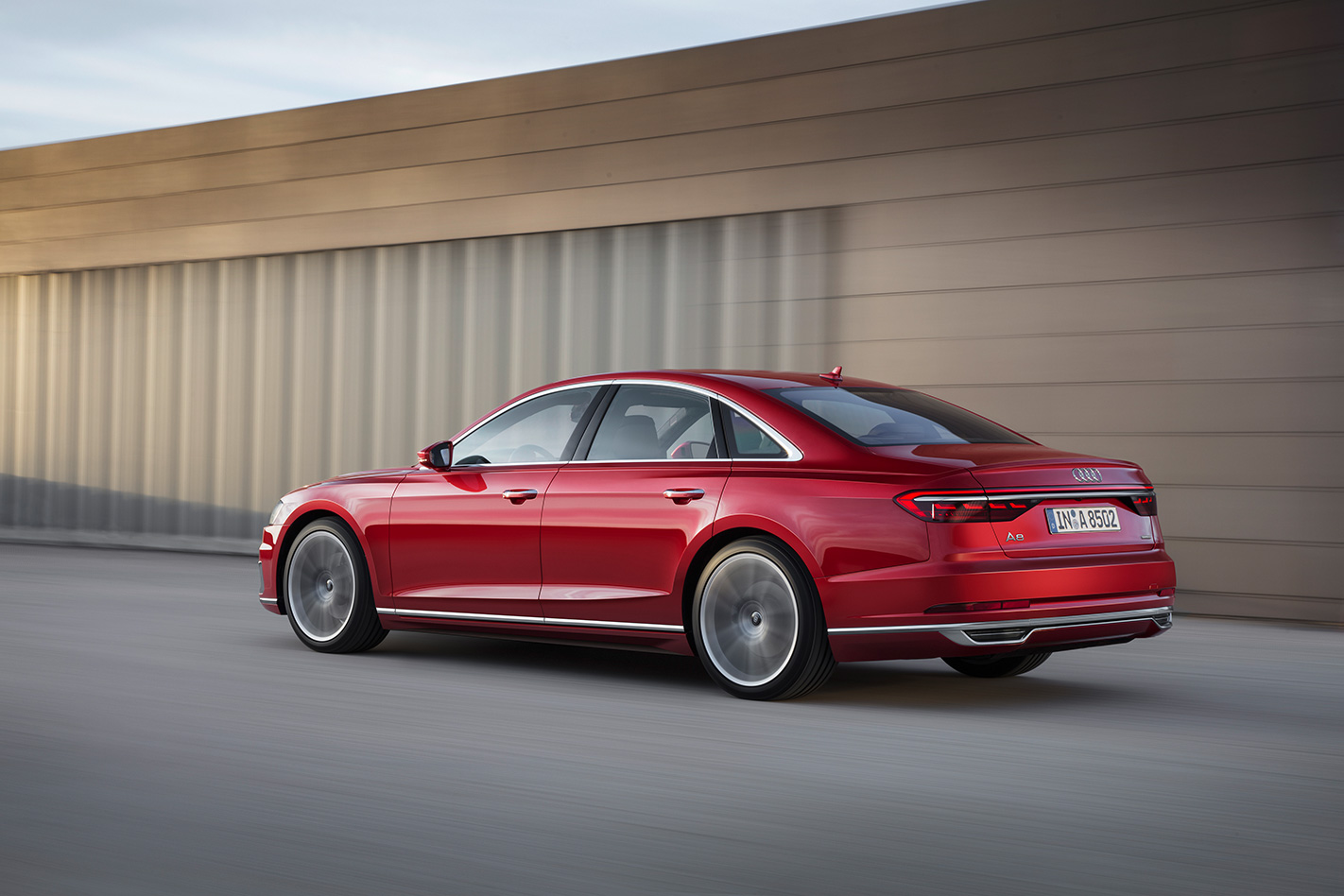
“The first production A8s will not have Traffic Jam Pilot on board because we don’t have homologation for this technology. We cannot really say right now when the cars will have this technology.”
Rolling out the functions as the systems are legalised will not be a simple retrofit or software switch, as Audi will not fit much of the sensor hardware to production vehicles until the exact requirements of each global region are established.
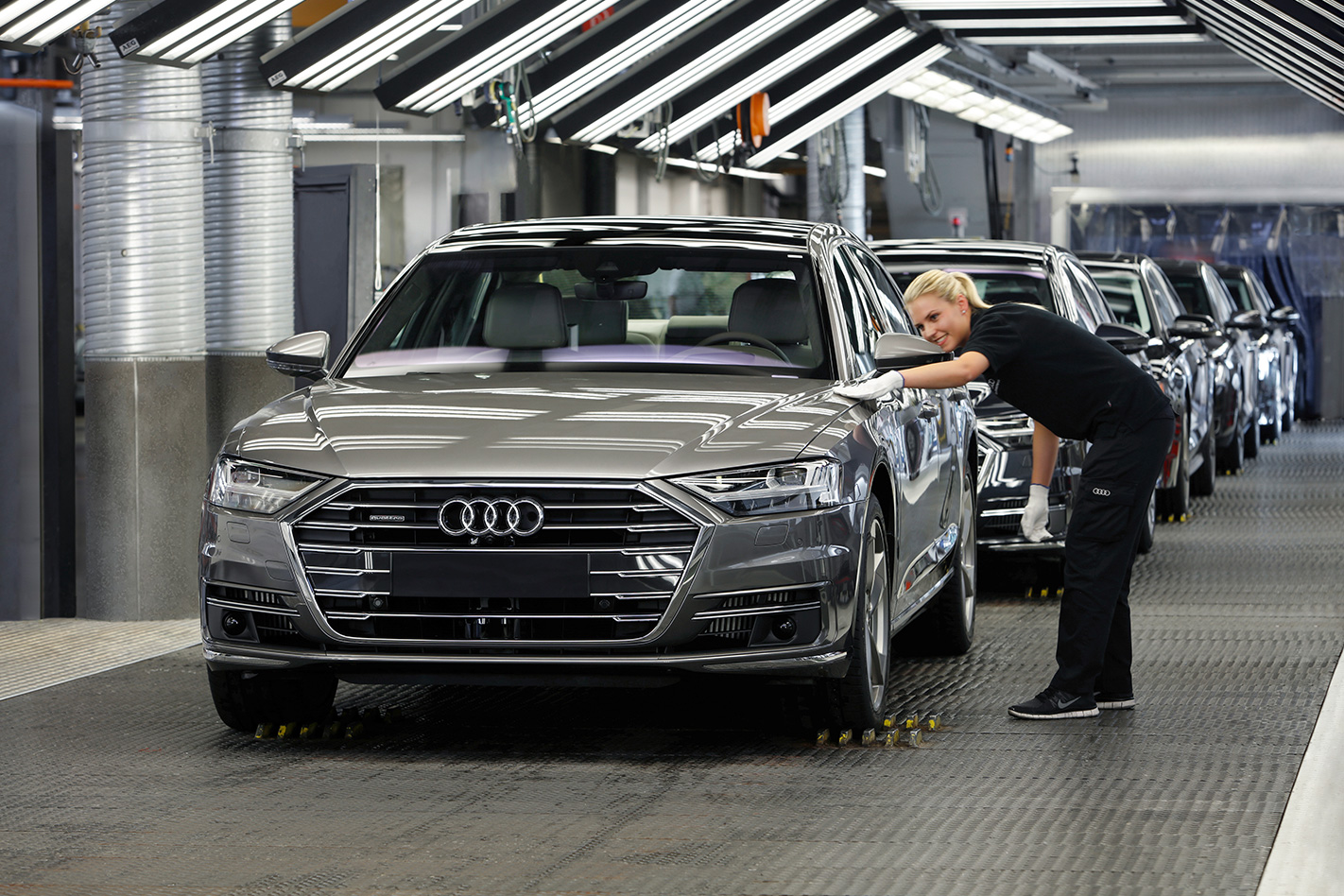
“If you’re asking for my personal opinion, I would say buy an A8 now because the level two systems; our adaptive cruise assist, which works from zero to 250km/h is a superb function … it offers the best driver’s assistance you can get. It’s a big step forward from our previous models”.
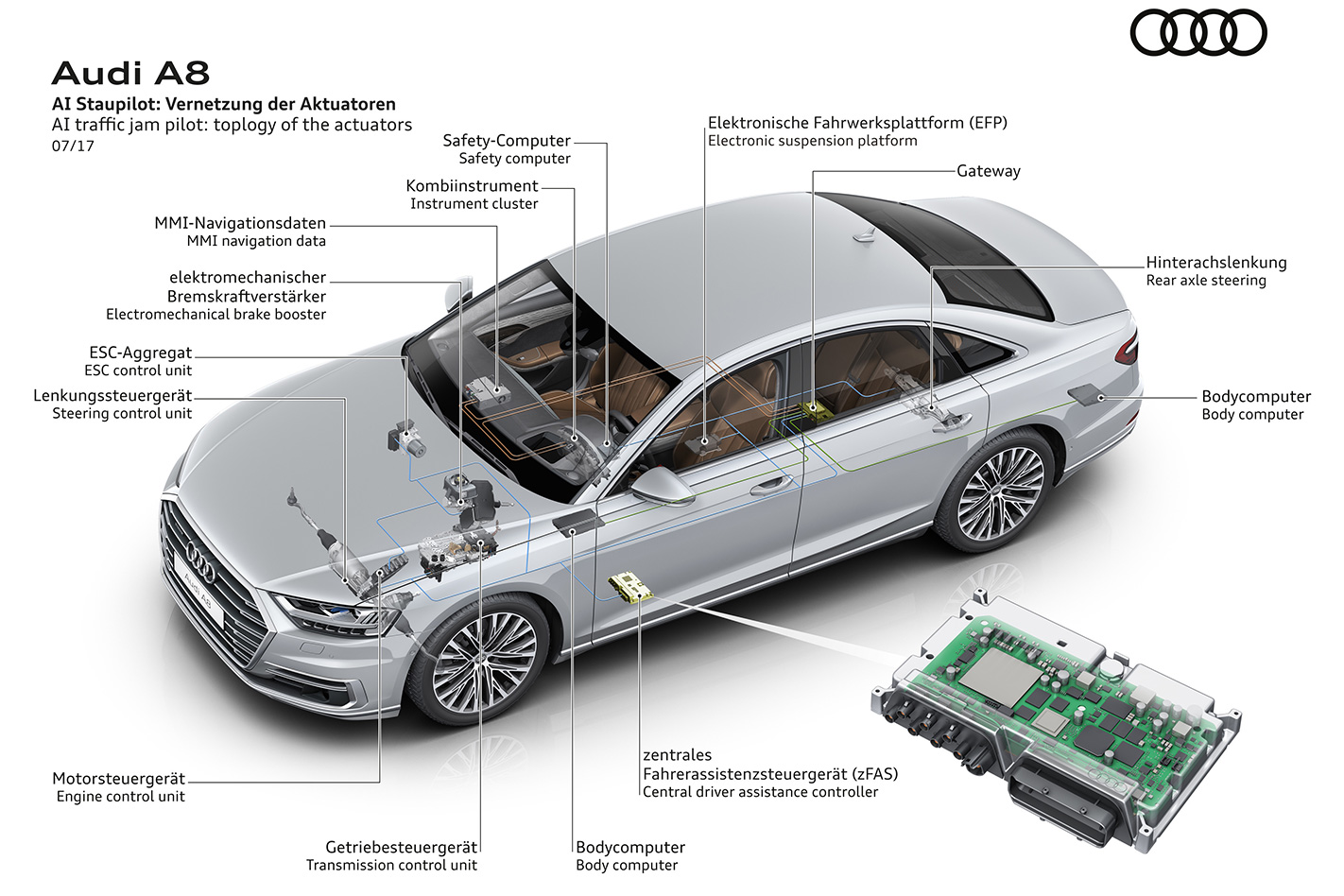
From launch, the A8 range will be diesel-only with a 3.0-litre V6 powering a long and short wheelbase version with 210kW, while a V8 diesel A8 will also be on offer in short wheelbase only and 320kW.
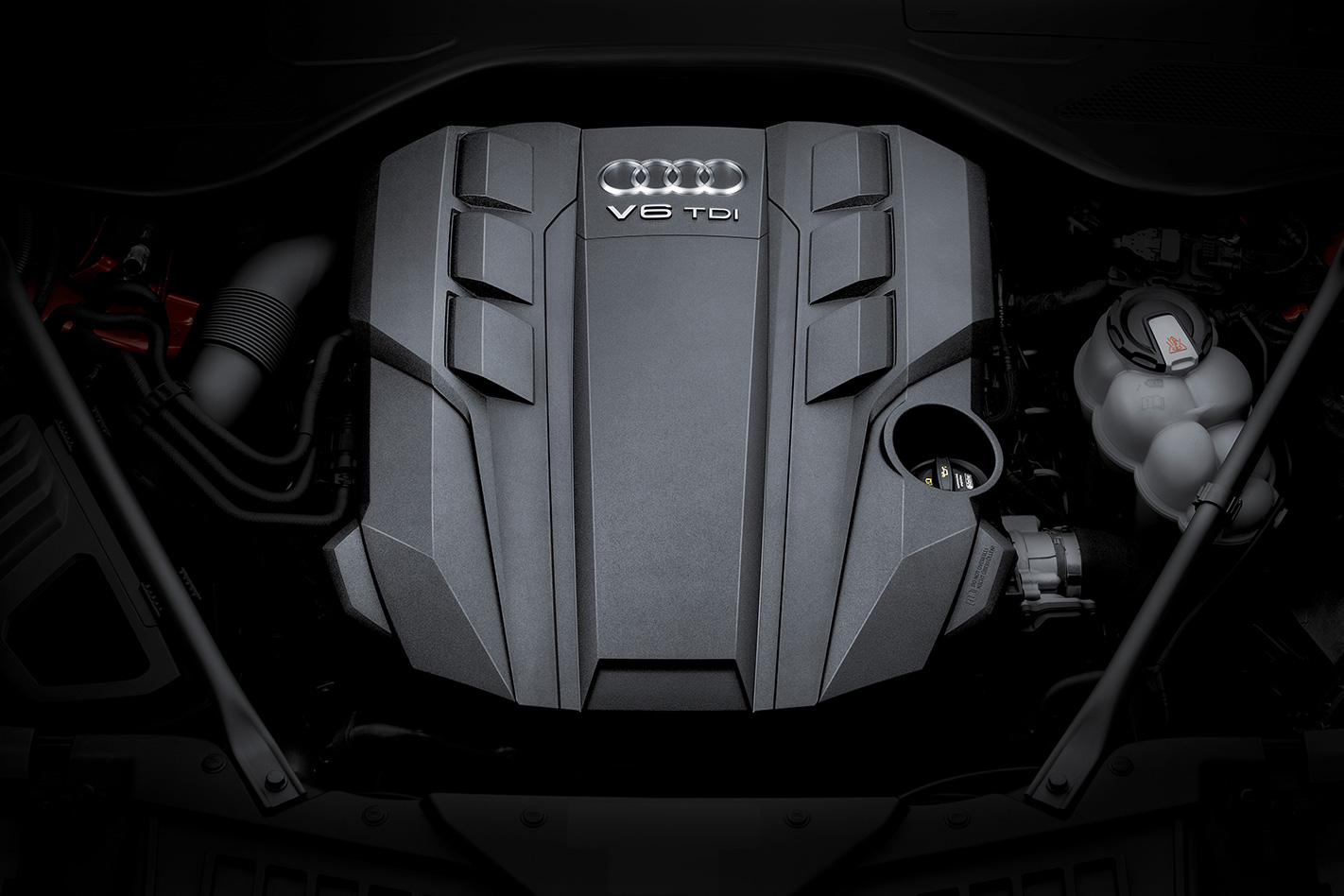
Regardless of the drivetrain, all A8s set a new benchmark for the car maker with a 48-volt main electrical system in place of the more traditional 12-volt system, which enables the use of high-demand electrical systems such as a new all-in-one belt-drive alternator/starter.
The high-power electrics also run an active suspension system that uses electromechanical actuators on each corner of the suspension in place of passive anti-roll bars for a superior ride and improved dynamics, says Audi.
On the outside, the A8 has grown compared with its predecessor, measuring a significant 5170mm in length or 130mm longer for the L version which has a stretched wheelbase for more second-row seating space.
Its new styling wears the largest grille yet fitted to any Audi model and is complemented by a recognisable but evolved A8 aesthetic, Audi’s laser headlights with LED matrix and organic LED tail lights that are connected with a continuous light band for boosted visibility and a striking look.
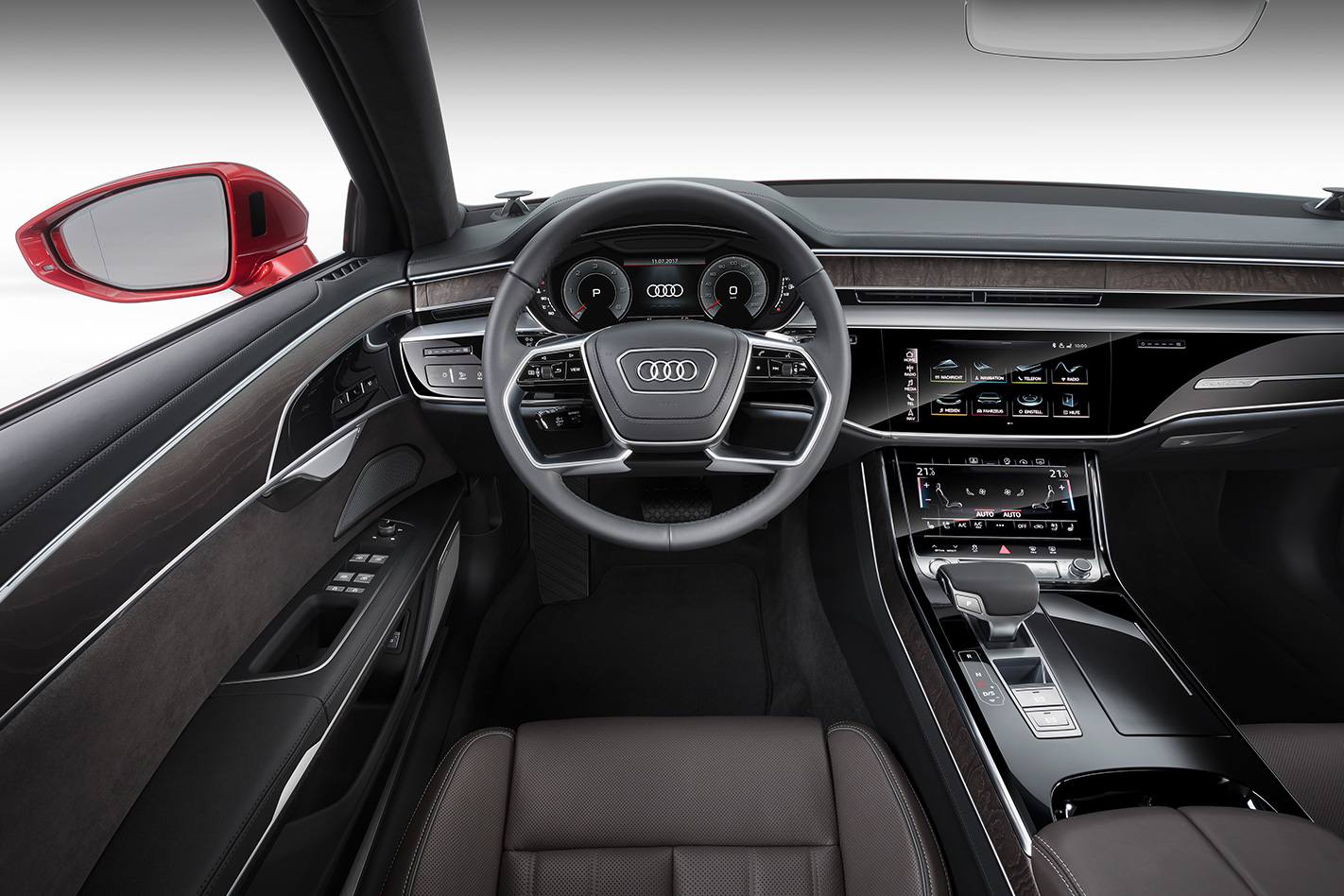
Its expansive dash and low bulkhead creates a genuinely spacious feel with a continuous line that flows through the central area to the door trims, while air vents hide away until opened with solid-state switches featuring haptic vibration feedback.
Central information, climate controls and driver’s instrument cluster are now exclusively digital for a clean but versatile design.
Like many models in the four-ring line-up, the A8 now gets the Virtual Cockpit gauge cluster for customisable views and displaying the prioritised information, while almost all traditional switches and knobs have been removed in favour of a pair of touch screens.
The larger 10.1-inch screen provides access to the new MMI Operating Display Concept systems, while a second lower screen measures 8.6 inches for access to comfort systems including climate controls. Both large panels have a haptic vibration and audible reaction to touch controls. An additional head-up display is optional.
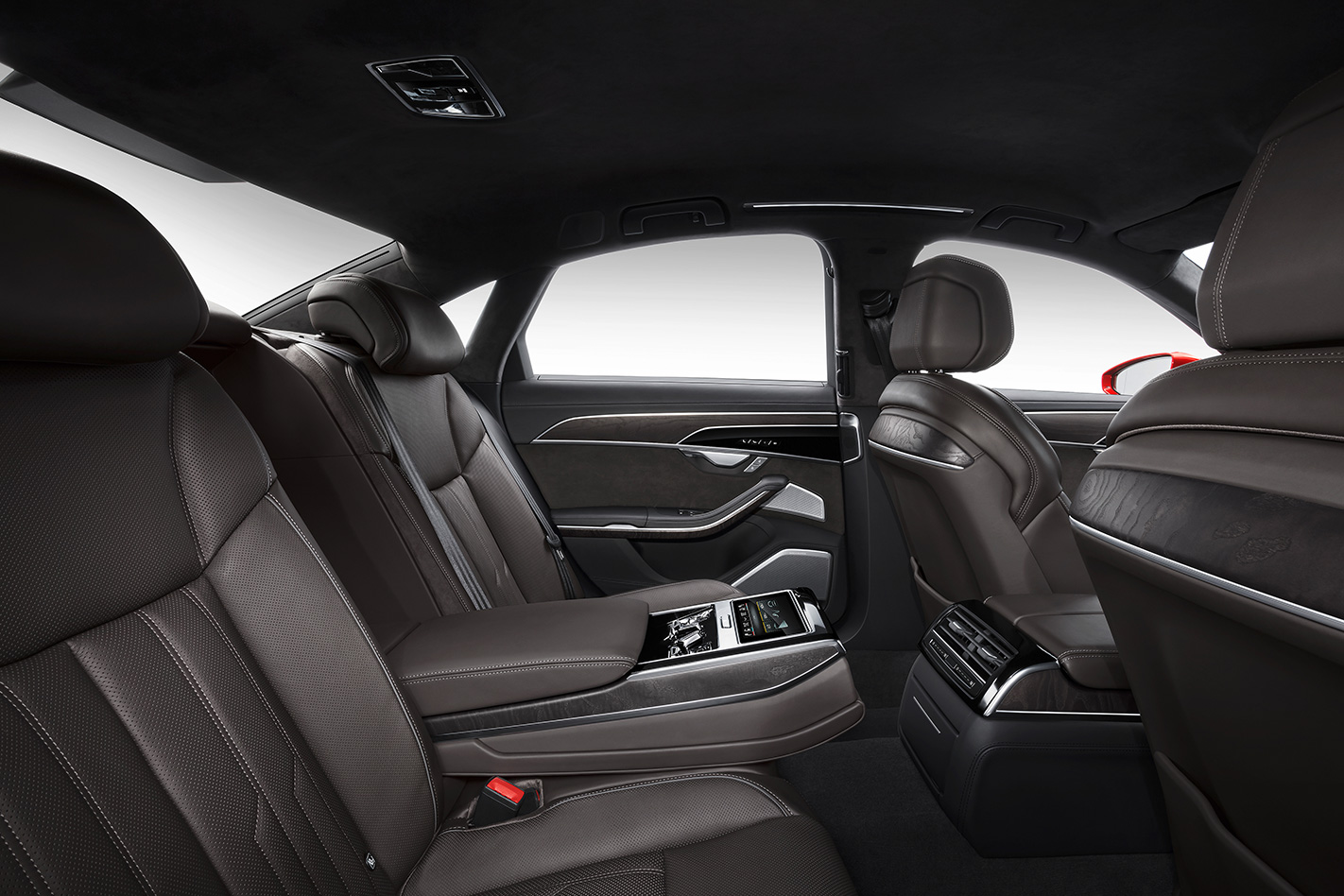
Like the touchscreens, electric door opening handles are also a first for Audi and allow the door to be popped open with a small movement of the interior handle, but a larger pull overrides the electrical operation in the case of a faulty system.
Despite the new larger dimensions (1473mm high, 1945mm wide and up to 3128mm long) the new Audi has lost weight thanks to the use of more exotic construction materials and techniques including a carbon fibre rear panel and magnesium strut tower bars.






